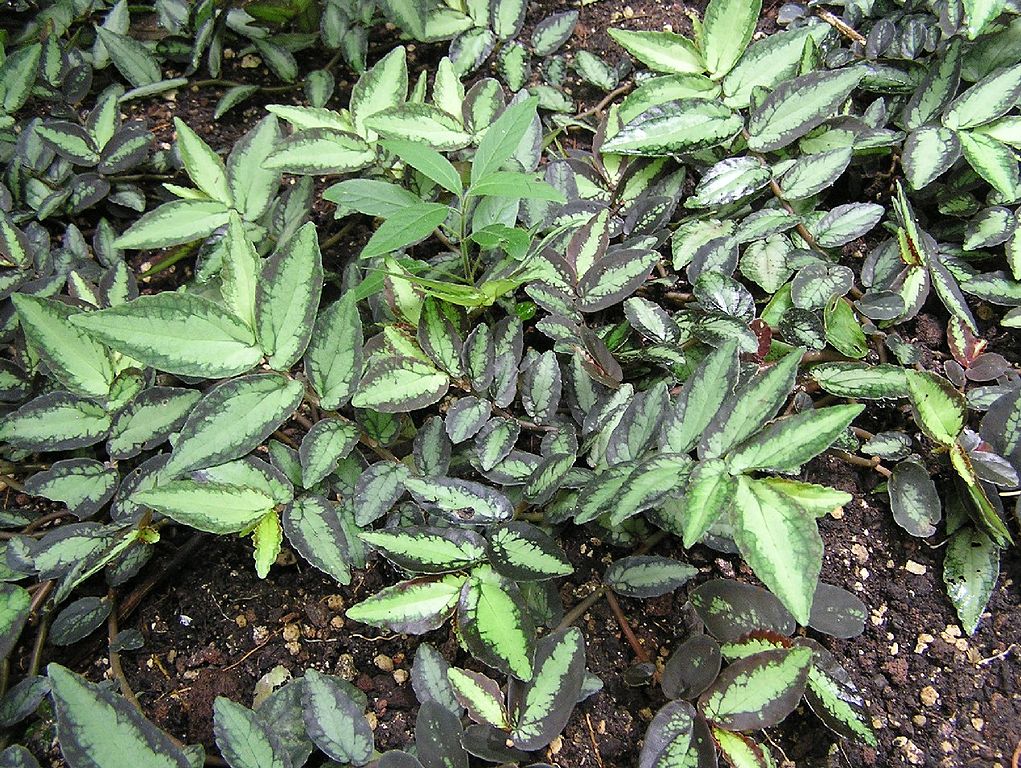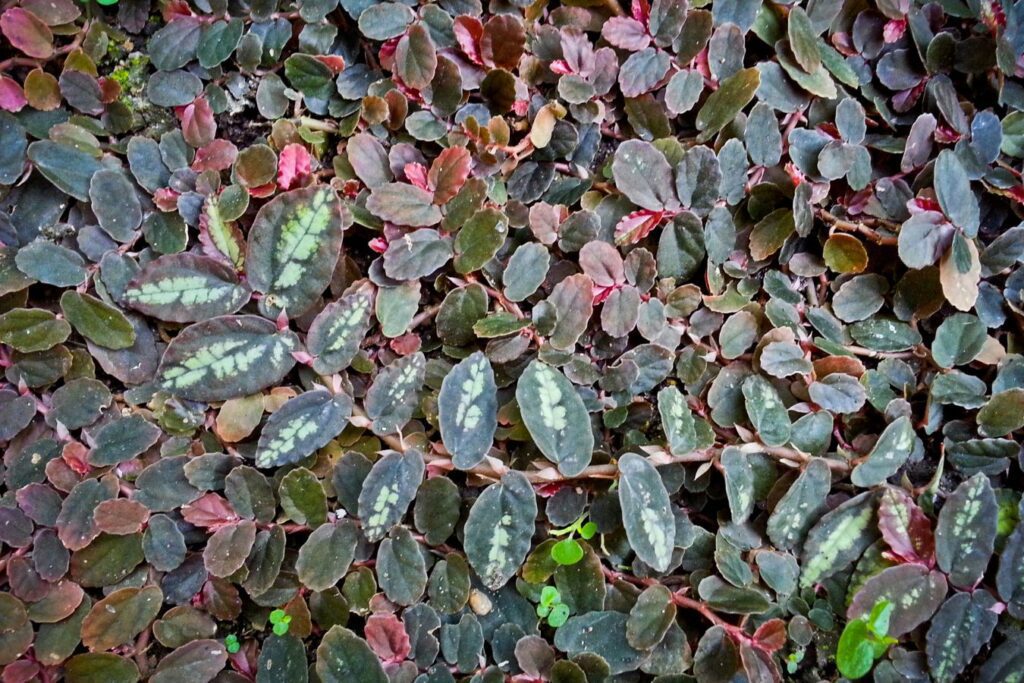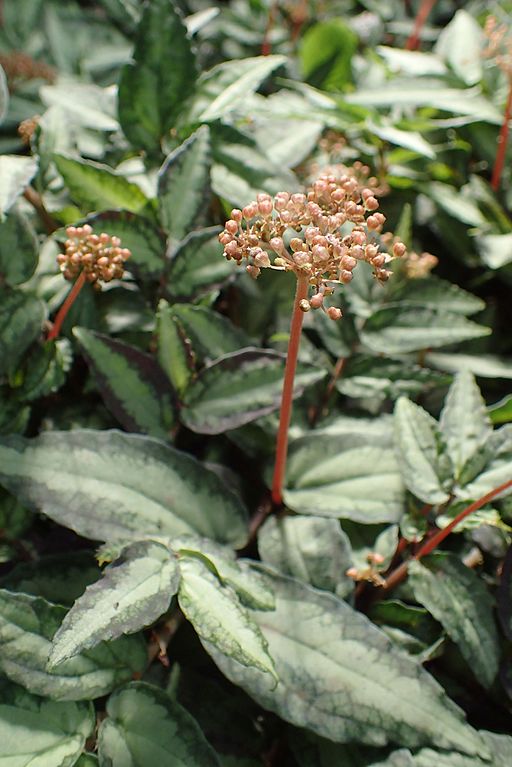
Trailing Watermelon Begonia (Pellionia repens) is a herbaceous, monoecious, perennial, and ornamental plant with a climbing to creeping growth habit, often used for decorative purposes indoors in pots. Belonging to the same family as nettles and pileas, it originates from valley forests at altitudes between 800 to 1100 meters in the provinces of Hainan and Yunnan in China, as well as Bhutan, Cambodia, India, Indonesia, Laos, Malaysia, Myanmar, Philippines, Thailand, and Vietnam in Southeast Asia. The genus name, Pellionia, is a tribute to Alphonse Odet Pellion (1786 – 1868), a distinguished French naval officer who participated in various campaigns worldwide. The specific epithet ‘repens‘ refers to its crawling growth behavior.

It features zigzagging stems following the arrangement of leaves, terete, branching, fleshy, prostrate, and reddish in color. While it doesn’t grow much in height, reaching about 13 centimeters, it has a great spreading ability, reaching up to 1.2 meters in diameter as its stems readily root when they touch the ground. The leaves are alternate, fleshy, obliquely elliptic to oblong, with margins that can be wavy, crenate, or nearly entire. With a grayish-green hue, the leaves exhibit various patterns depending on the variety. While P. repens daveauana showcases thick reddish margins that can even dominate the leaf blade, P. repens pulchra highlights its veins, creating a beautiful mosaic-like contrast. The abaxial surface of the leaves is cream-pink, with red veins.
Many people tend to mistake Pellionia repens for begonias due to the appearance and texture of the leaves, but they are not related. While Pellionia belongs to the Urticaceae family, begonias belong to the Begoniaceae family.

Although its ornamental value primarily lies in its foliage, its delicate flowering is noteworthy, albeit rarely observed in indoor plants. Separated into male and female inflorescences, they form branched clusters of small flowers with 5 white or pink tepals and a subtle silver tone. The male inflorescences open upon contact with water, releasing a cloud of pollen, which earned it the common name “Trailing Watermelon Begonia.” The fruits that follow pollination are small, ovoid to ellipsoid achenes.
In its habitat, Trailing Watermelon Begonia prefers dark and humid places, growing in rock crevices, making it an excellent choice for indoor environments. As it adapts well to places with indirect sunlight, it can be cultivated near windows, in winter gardens, vertical gardens, and humid greenhouses. It looks perfect when displayed in hanging baskets or planters where its branches can drape. Given its affinity for moisture, it can also thrive in terrariums. If you live in a warm and humid area, you can also enjoy it in your garden, where it can be used as ground cover in shaded spots. The charm of Trailing Watermelon Begonia lies in its colors, patterns, and medium texture.

It should be grown under filtered light in a fibrous, slightly acidic substrate kept moist. It doesn’t tolerate complete substrate dryness between waterings, so it’s important to water it regularly, as soon as the top layer of the substrate dries out. Similarly, overwatering can harm the plant and lead to rapid root rot.
Apart from substrate moisture, supplementing air humidity is crucial, especially indoors where the air is often dry. Mist the leaves in the morning and early afternoon or use an electric humidifier. Trailing Watermelon Begonia doesn’t tolerate intense cold or frost, as well as drafts or air-conditioned environments. Use a mild and continuous fertilizer during spring, summer, and autumn, and suspend fertilization if the winter is cold. Slow-release fertilizers applied during spring simplify plant nutrition. It’s easy to propagate through layering or stem cuttings that can be directly rooted in the substrate.


